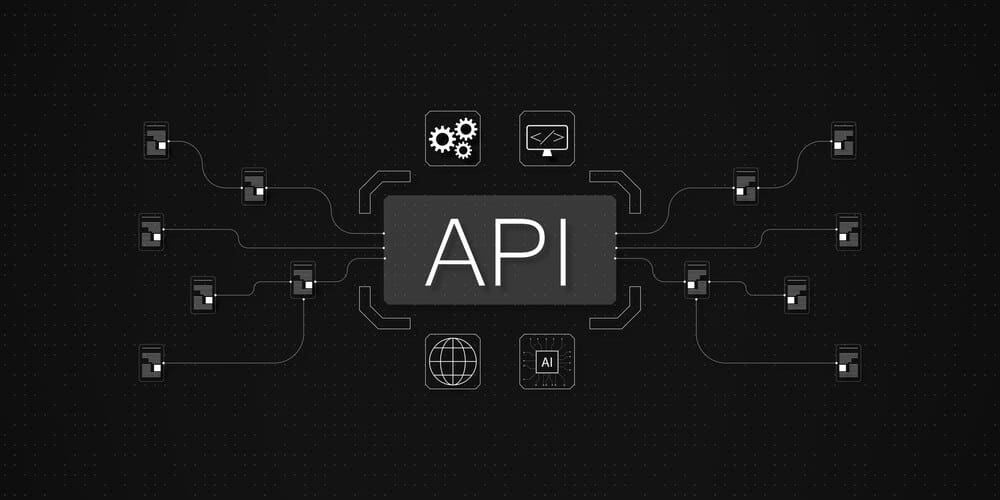An Application Programming Interface, or API, is the invisible engine of the modern internet, acting as a critical messenger that allows different software applications to communicate and share information with each other. You interact with dozens of APIs every day, whether you’re checking the weather on your phone, booking a flight online, or logging into a new service using your Google account. For businesses, APIs are the fundamental building blocks that enable innovation, allowing developers to securely leverage existing services and data to build new products faster, creating a connected digital ecosystem that powers everything from e-commerce to enterprise software.
The Simplest Analogy: A Waiter in a Restaurant
To truly grasp what an API does, imagine you are sitting in a restaurant. You, the customer, want to order food, but you cannot go directly into the kitchen to prepare it yourself. The kitchen is a complex system with its own rules, ingredients, and processes that you don’t know or need to know.
In this scenario, the waiter is the API. You are given a menu—a list of available dishes you can order. You make your request to the waiter, specifying exactly what you want from the menu. The waiter takes your order (the request) to the kitchen (the system or server).
The kitchen then processes the order and prepares your meal. Once it’s ready, the waiter brings the food back to your table. The food is the response to your request. The waiter has acted as the intermediary, translating your simple request into instructions the kitchen understands and delivering the result back to you in a predictable format.
The API works in precisely the same way. It provides a “menu” of what an application can request from another system. It takes that request, communicates it to the other system in a language it understands, and then returns the system’s response to the original application. The user of the first application never sees this complex back-and-forth; they only see the final result, just as a diner only sees the finished meal, not the chaos of the kitchen.
APIs in Action: Everyday Examples
This restaurant analogy is helpful, but seeing how APIs function in real-world applications makes their power even clearer. They are the hidden connectors that make many of the digital services we take for granted possible.
Weather Forecasts
When you open a weather app on your smartphone, that app almost certainly does not own its own network of weather satellites and meteorological stations. Doing so would be incredibly expensive and complex.
Instead, the app uses an API to connect to a dedicated weather service, like The Weather Channel or AccuWeather. The app sends a request through the API, asking, “What is the current temperature and 10-day forecast for London, UK?” The weather service’s system receives this request, retrieves the relevant data, and sends it back through the API. Your app then displays this data in a user-friendly format.
Online Travel Booking
Consider a travel aggregator website like Expedia or Kayak. These platforms allow you to search for flights, hotels, and rental cars from hundreds of different providers all in one place. They don’t own any airplanes or hotel chains.
Their entire business model is built on APIs. When you search for a flight from New York to Los Angeles, the site uses APIs to send simultaneous requests to American Airlines, Delta, United, and others. Each airline’s system responds with real-time data on flight availability and pricing. The travel site then aggregates all these responses and presents them to you on a single page.
“Log in with Google” or “Sign in with Facebook”
Have you ever signed up for a new website or app and seen an option to “Log in with Google”? This convenient feature is powered by an API. Instead of building their own secure login and password management system from scratch—a difficult and high-stakes task—developers can integrate Google’s login API.
When you click that button, the application sends a request to Google’s API, essentially asking, “Can you verify this user’s identity?” You are briefly sent to a Google login screen to enter your credentials. Once you’re authenticated, Google’s API sends a response back to the application confirming your identity, often including basic profile information like your name and email address (with your permission). This saves you from creating yet another password and gives the developer a secure, pre-built authentication solution.
Why APIs Are a Game-Changer for Business
For individuals, APIs provide convenience and seamless experiences. For businesses, they represent a fundamental shift in how software is built and how companies operate. The strategic use of APIs is now a core driver of digital transformation, growth, and competitive advantage.
Accelerated Innovation and Speed to Market
APIs are like pre-fabricated components for software developers. Instead of building every single feature from the ground up, a company can use APIs to plug in existing, best-in-class functionality. For example, a startup building a new e-commerce app doesn’t need to create its own payment processing system; it can simply integrate the Stripe API. It doesn’t need to build a mapping and delivery-tracking feature; it can use the Google Maps API.
This dramatically reduces development time and cost, allowing businesses to launch new products and features much faster. They can focus their resources on their unique value proposition rather than reinventing the wheel.
Creation of New Revenue Streams
Many companies have turned their core services or data into a product by creating an API and charging other businesses to access it. This is the foundation of the “API Economy.” Salesforce, for instance, generates significant revenue by allowing other companies to build applications on top of its customer relationship management (CRM) platform via APIs.
Twilio built its entire multi-billion-dollar business around providing APIs for communication. Any developer who wants to add SMS text messaging or voice call capabilities to their app can pay to use Twilio’s simple API instead of building a complex telecommunications infrastructure themselves.
Improved Internal Efficiency
APIs aren’t just for external use. Companies increasingly use private, internal APIs to connect their own disparate systems. An API can link a company’s sales software (like Salesforce) to its marketing automation tool (like Marketo) and its accounting system (like QuickBooks).
When these systems can talk to each other automatically, it eliminates data silos and automates tedious workflows. When a salesperson closes a deal in the CRM, an API can trigger an invoice to be generated in the accounting system and add the customer to a new email campaign in the marketing tool, all without manual intervention.
Expanded Reach and Partnerships
By offering a public API, a company allows its platform to be integrated into countless other products and services, vastly expanding its reach. When Uber integrated its API into Google Maps, it allowed users to book a ride directly from the map interface, putting its service in front of millions of potential new customers.
A Quick Look Under the Hood
While this is a non-technical explanation, a few key terms can help deepen your understanding of how APIs are structured.
An API typically consists of endpoints, which are like different URLs for specific requests. For a weather API, one endpoint might be for getting the current temperature, while another is for the historical forecast. The “menu” in our restaurant analogy is essentially the list of available endpoints.
To access an API, an application often needs an API key. This is a unique code, like a password, that identifies the application making the request. It’s used for security, to track usage, and to ensure that only authorized developers can access the system.
The dominant standard for web APIs today is known as REST (Representational State Transfer). You don’t need to know the technical details, only that REST is a set of architectural principles that makes communication between systems simple, reliable, and scalable. It’s the common grammar that most modern APIs use to speak to each other.
The Connective Tissue of the Digital World
In conclusion, an API is far more than a technical acronym. It is the fundamental connective tissue of our digital world, the invisible yet indispensable intermediary that allows our applications, systems, and services to work together. From powering the apps on your phone to enabling complex corporate software, APIs are the engines of interoperability. For any business leader seeking to thrive in the modern economy, understanding the strategic power of APIs is no longer optional—it is essential for building agile, innovative, and connected enterprises.








